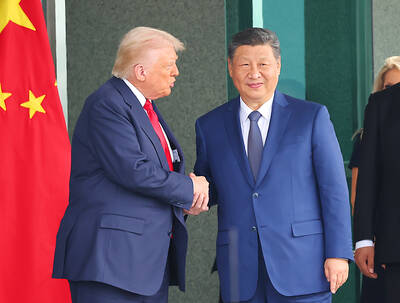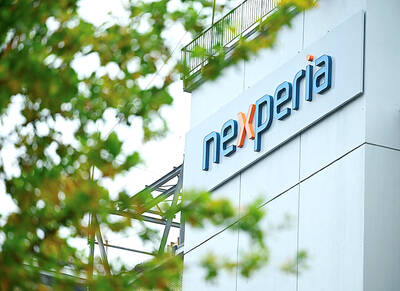China is pressing for a vast Asia-Pacific free-trade agreement, a senior official said yesterday, as a rival US-led deal that excludes the Asian giant has yet to reach agreement.
Chinese Assistant Minister of Commerce Wang Shouwen (王受文) told reporters at a briefing that China has proposed setting up a working group to study the feasibility of an Asia-Pacific Free Trade Agreement (FTAAP).
The proposal comes ahead of a meeting later this month of trade ministers from the APEC forum, which China will host.
“The feasibility study will look into the potential economic benefits if APEC members reach a free-trade agreement, how to make use of existing FTAs... and whether we can use the similar aspects of the various FTAs to serve the general FTA within the Asia-Pacific region,” Wang said. “We think there will be no conflict between the FTAAP and the region’s other FTAs under discussion.”
The US has been trying to secure agreement on a Trans-Pacific Partnership (TPP), a grouping of 12 nations including Japan, Australia, Malaysia and Mexico. All belong to APEC, but the US-led trade talks have become hung up on issues related to Japan’s tightly guarded auto and agricultural sectors.
There had been hopes that Tokyo and Washington might break an impasse in the stalled talks during US President Barack Obama’s visit to Japan last week, but they failed to clinch a deal and negotiations continue.
Chinese President Xi Jinping (習近平) in October last year said at the APEC business forum in Indonesia that his country would “commit itself to building a trans-Pacific regional cooperation framework that benefits all parties.”
The comments were interpreted by Chinese media as criticism of the TPP — a key part of Obama’s economic and strategic policy.
The composition of the working group is yet to be decided, but will possibly comprise government officials, business people and academics from different countries, Wang said.
It will come up with suggestions on whether the FTAAP is desired and whether negotiations should start, he said.
The proposal “has won positive reactions from some APEC member countries,” he added, though he did not identify them.

RUN IT BACK: A succesful first project working with hyperscalers to design chips encouraged MediaTek to start a second project, aiming to hit stride in 2028 MediaTek Inc (聯發科), the world’s biggest smartphone chip supplier, yesterday said it is engaging a second hyperscaler to help design artificial intelligence (AI) accelerators used in data centers following a similar project expected to generate revenue streams soon. The first AI accelerator project is to bring in US$1 billion revenue next year and several billion US dollars more in 2027, MediaTek chief executive officer Rick Tsai (蔡力行) told a virtual investor conference yesterday. The second AI accelerator project is expected to contribute to revenue beginning in 2028, Tsai said. MediaTek yesterday raised its revenue forecast for the global AI accelerator used

TEMPORARY TRUCE: China has made concessions to ease rare earth trade controls, among others, while Washington holds fire on a 100% tariff on all Chinese goods China is effectively suspending implementation of additional export controls on rare earth metals and terminating investigations targeting US companies in the semiconductor supply chain, the White House announced. The White House on Saturday issued a fact sheet outlining some details of the trade pact agreed to earlier in the week by US President Donald Trump and Chinese President Xi Jinping (習近平) that aimed to ease tensions between the world’s two largest economies. Under the deal, China is to issue general licenses valid for exports of rare earths, gallium, germanium, antimony and graphite “for the benefit of US end users and their suppliers

Dutch chipmaker Nexperia BV’s China unit yesterday said that it had established sufficient inventories of finished goods and works-in-progress, and that its supply chain remained secure and stable after its parent halted wafer supplies. The Dutch company suspended supplies of wafers to its Chinese assembly plant a week ago, calling it “a direct consequence of the local management’s recent failure to comply with the agreed contractual payment terms,” Reuters reported on Friday last week. Its China unit called Nexperia’s suspension “unilateral” and “extremely irresponsible,” adding that the Dutch parent’s claim about contractual payment was “misleading and highly deceptive,” according to a statement

Artificial intelligence (AI) giant Nvidia Corp’s most advanced chips would be reserved for US companies and kept out of China and other countries, US President Donald Trump said. During an interview that aired on Sunday on CBS’ 60 Minutes program and in comments to reporters aboard Air Force One, Trump said only US customers should have access to the top-end Blackwell chips offered by Nvidia, the world’s most valuable company by market capitalization. “The most advanced, we will not let anybody have them other than the United States,” he told CBS, echoing remarks made earlier to reporters as he returned to Washington